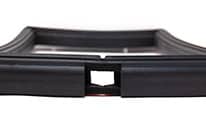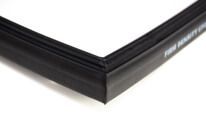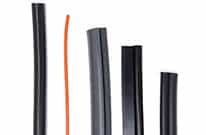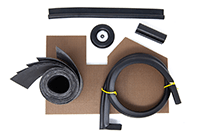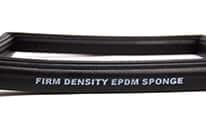Supply chain optimization lets you minimize purchasing and inventory costs, improve operational performance, and increase customer satisfaction. Before COVID-19, looking for ways to optimize your supply chain was important but not urgent. Today, pandemic-driven disruptions are making supply chain optimization mission-critical.
That’s why Richard Lebovitz, the CEO of a supply chain consultancy called LeanDNA, is offering ways to optimize your supply chain during COVID-19. Let’s take a look at Lebovitz’s recent article in Supply & Demand Chain Executive (SDC) and consider some key questions that Elasto Proxy, a rubber fabricator and distributor, recommends that you ask and answer.
These questions fall into three major areas:
- inventory optimization
- digital transformation
- planning for every part
Let’s take a closer look.
#1 Inventory Optimization
“Inventory optimization is pivotal in turning the supply chain from a cost center into a competitive weapon,” Lebovitz writes in SDC. To change your organization’s mindset, consider the following questions in light of COVID-19.
- Are you carrying too little inventory?
- Are you carrying too much inventory?
- Are you ordering accurately?
If you’re carrying too little inventory, you’re risking stock-outs and stoppages in production. If you’re carrying too much inventory, you’re tying up cash and running the risk that items may become obsolete. Following your sales forecasts can help you to order accurately, but COVID-19 has disrupted historical buying patterns. That’s where digital transformation and a plan for every part can help.
#2 Digital Transformation
Digital transformation is the replacement of manual processes with digital ones, or the adoption of newer digital technologies to replace older ones. At a time when 87% of supply chain leaders say that they have a digital transformation initiative, there’s plenty of buzz about automation and artificial intelligence (AI). Yet, digital transformation is also about asking and answering some fundamental questions.
- Is the data that you’re using accurate?
- Can everyone see this data?
- Are some people using different data instead?
- Is the right data actionable – and by whom?
Lebovitz suggests forming “attack teams” within your organization to address these challenges. Then, “instead of spending time trying to determine which spreadsheet is correct”, he writes, you can “focus on revenue-building initiatives”. Digital technologies that support flexible decision making from remote locations are optimal but remember that robust data collection needs solid analytics.
#3 Planning for Every Part
A plan for every part (PFEP) includes data about every part number that comes from your suppliers and data about every finished goods stocking unit (SKU) that you send to your customers. Inventory optimization and digital transformation support PFEP, but you’ll still need to address the following questions.
- Do your safety stock levels account for potential COVID-19 disruptions?
- Are your minimum order quantities (MOQs) sized properly based on demand?
- Besides lower MOQs, do your suppliers offer other ways for you to free up cash?
Although some businesses address these issues annually, Lebovitz recommends tackling them monthly if you can. The very best practice, he notes, is to plan for every part in real-time. Fortunately, with the help of the right manufacturing partner, you can begin to optimize your supply chain today.
Finding Rubber Fabrication and Distribution for Supply Chain Optimization
Elasto Proxy is a rubber fabricator and distributor with a catalog of standard parts, flexible custom fab capabilities, and value-added services such as kitting, parts marking, custom packaging, and warehousing. For over 30 years, we’ve been supplying value-driven manufacturers with coils of rubber, finished gaskets, custom thermal-acoustic insulation, molded plastic and rubber parts, and other products.
If you’re looking for ways to optimize your supply chain during COVID-19 and beyond, we’d like to hear from you. Ask us about the benefits of outsourced fabrication vs. in-house production, why the prices you’ve been paying to suppliers aren’t your true costs, and how vendor consolidation can support your supply chain optimization efforts. The answers may surprise you.




